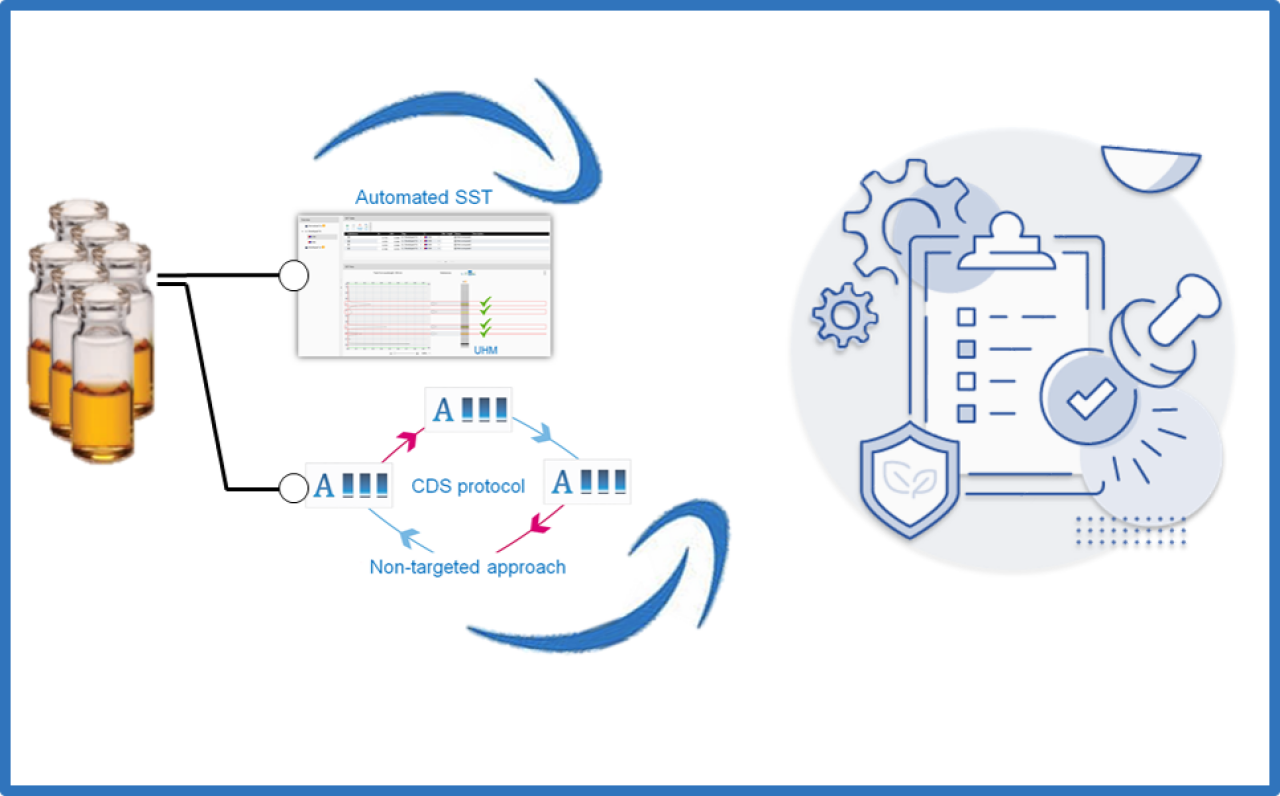
Complementary developing solvents for simpler and more powerful routine analysis by high-performance thin-layer chromatography
There is no doubt that high-performance thin-layer chromatography (HPTLC) can be applied in routine quality control, but implementing a wide range of methods e.g. from pharmacopoeias may present the challenge of maintaining many different plates, solvents, and standards. Aiming at the simplification of the routine analysis of many diverse samples, an innovative approach based on the parallel use of three complementary developing solvents (CDS) was developed.
LPDS [toluene, ethyl acetate 90:10 (V/V)], MPDS [cyclopentyl methyl ether, tetrahydrofuran, water, formic acid 40:24:1:1 (V/V)], and HPDS [ethanol, dichloromethane, water, formic acid 16:16:4:1 (V/V)] are proposed for use in an advanced HPTLC protocol: during routine analysis, each sample of any kind is always analyzed on three plates. Combining the three resulting complimentary fingerprints in a novel composite image significantly expands the available information about the sample compared to conventional fingerprints. Even though a sample is analyzed three times instead on once, the approach can be very suitable and cost efficient for routine analysis, because it can be automated and requires very little maintenance.
The CDS may be continuously validated for reproducibility and stability with the Universal HPTLC Mixture (UHM). Such qualification is an important requirement for the elaboration of large databases ready for use with advanced computational models.
Using the Complementary Developing Solvents approach could help positioning HPTLC as a general medium to high throughput technique, for identification of both, complex mixtures and individual compounds.
Read how our new article is addressing challenges of complex analytes in routine analysis.
Comments
Leave a comment